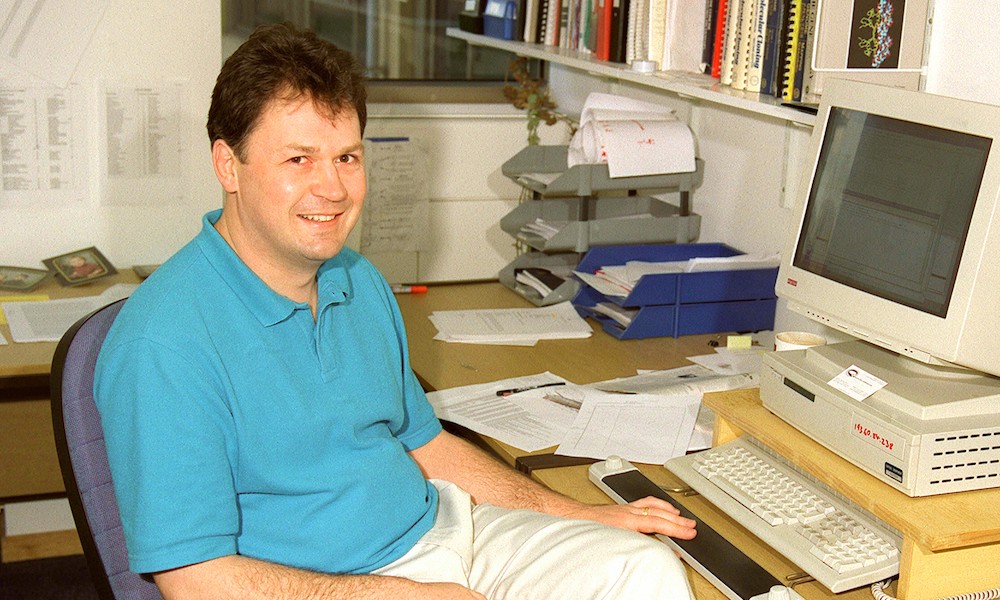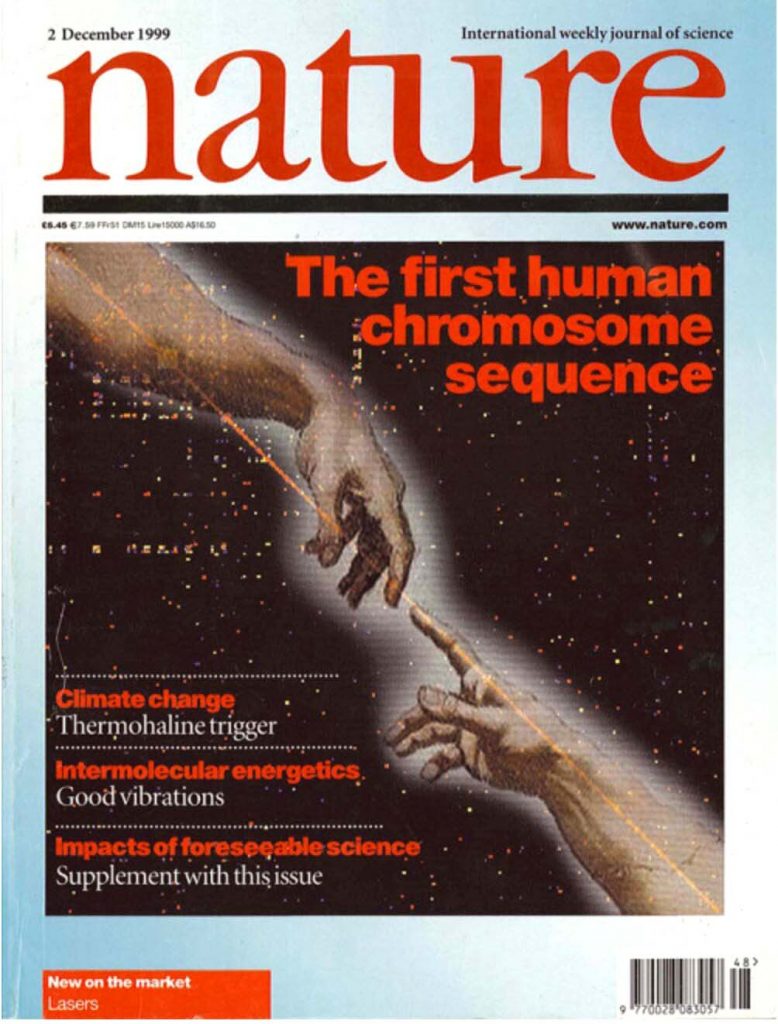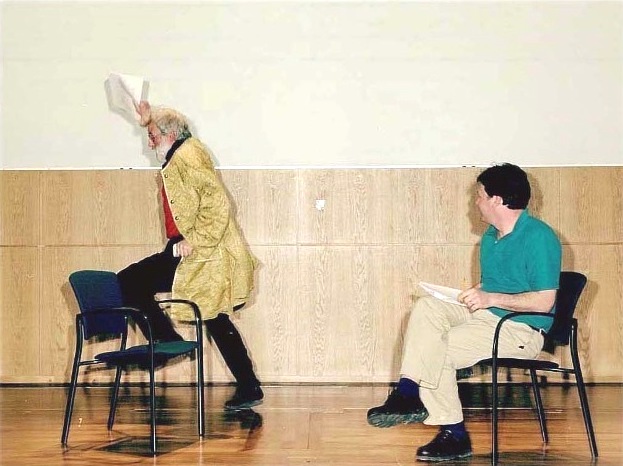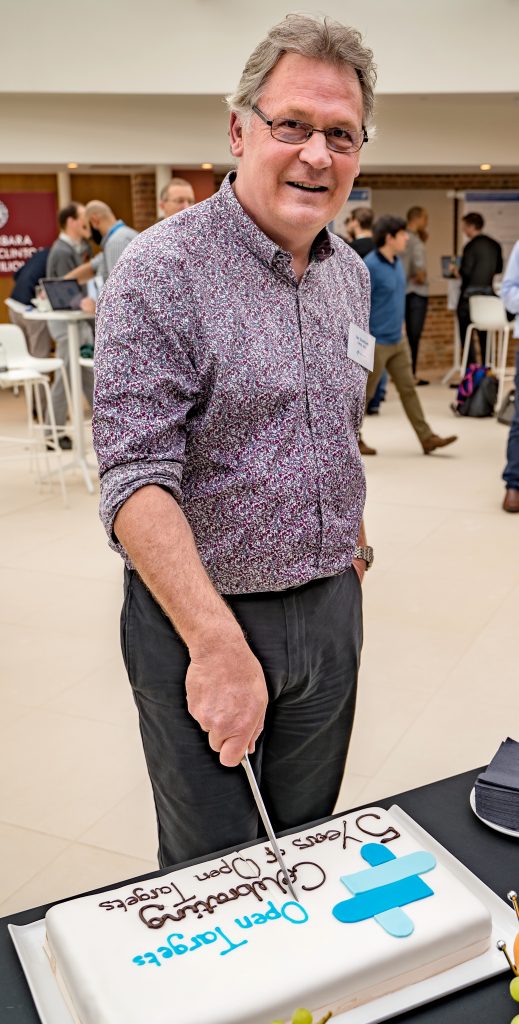
The human genome, data sharing, and drug discovery: a career profile with Ian Dunham
Ian Dunham walks us through his career so far including working on the human genome project, seeing his work on the cover of Nature and his current role as Director of Open Targets.

A crucial decision in the drug discovery process is selecting the best drug target. Open Targets is an innovative public-private partnership which aims to improve the success rate of new drugs by using open access human genetics and genomics data to identify and prioritise potential drug targets.
Ian Dunham walks us through how his early interest in biochemistry led him to EMBL-EBI, and his current role as Director of Open Targets.
When did you first become interested in genetics and genomics?
I went to university before anything like genomics existed, so I studied biochemistry because I was interested in molecular biology and how organic chemistry is used in living systems. I was fascinated by recombinant DNA and cloning, and the ability to take viruses and bacteria and manipulate pieces of the genetic code to create new things.
How did you become involved in the sequencing of the human genome?
It was a subject of discussion at the time, and when I started my postdoc with Maynard Olson at Washington University in Saint Louis, I suggested we could clone a whole chromosome using Yeast Artificial Chromosomes (YACs). Maynard thought I was crazy.
In fact, three years later I started working on the Human Genome Project, cloning human chromosome 22 with YACs. We published our map of human chromosome 22 in 1995, and this was really the beginning of large scale cloning for genome sequencing.
Soon after, I joined John Sulston in the formation of the Sanger Centre, now the Wellcome Sanger Institute, located on the same campus as EMBL-EBI. At this point, several groups had started to work on sequencing chromosome 22, but rather than competing with each other on these different pieces, we decided to work together to stitch up the whole sequence of the chromosome. We published the sequence just before the millennium; it was the first complete human chromosome and a major success.
Where did you go from there?

Our work on chromosome 22 became a model for the rest of public human genome sequencing, but we also used it as a model system for further analyses. Essentially, we said: we have the sequence, now what?
We did a couple of things. One was to try to create the most detailed map of gene annotation. The other was to think about how we could connect sequence with human variation, which led us to create a linkage disequilibrium map of chromosome 22, the first of its kind. We could then begin to convert our knowledge of the genome sequence into an understanding of how the genome functions as a unit. In collaboration with the ENCODE consortium, we started to map how the histone modifications that mark out enhancers and promoters change in different cell types.
Around this time, the Sanger Institute changed the focus of its research, and I was made redundant. I have always been interested in computation and software, so I decided to retrain in bioinformatics, joining the Ensembl team at EMBL-EBI. As luck would have it, I later joined Ewan Birney’s group and ended up working on the new version of the ENCODE project.
How did the Open Targets project come about?
Our work was slowly building up our understanding of genetic and epigenetic signals, leading us to the next hurdle: how do you convert the information generated in the genome project and genetics studies into useful information for drug discovery?
In discussions between Janet Thornton of EMBL-EBI, Mike Stratton of the Wellcome Sanger Institute, and Patrick Vallance at the time of GSK, we laid out what a collaboration between our institutions could look like, forming what is now Open Targets.
The challenge of Open Targets is to bridge the gap between drug discoverers, who tend to concentrate on one very specific mechanism, and the wider systematic genomics and genetics, which is useful to understand which targets are likely to be relevant for disease. I was appointed Science Director, tasked with fashioning the research programme.
Now as Director, how do you see Open Targets going forward?
On the public side, I think that we’ve made a real impact with the Open Targets Platform and Open Targets Genetics, and we want to ensure that those will continue to be maintained.
Within the consortium, the driving question behind our work is: how do we take the existing research programme and convert it into outputs that can feed into the drug discovery process? Our experimental research programme aims to deliver cutting-edge experiments and produce information about targets in disease, while our bioinformatic teams work to make sense of the data we are generating.
Ultimately, our aim is to create a complete package of data pinpointing the most likely targets to be of interest in disease, but the question is such an open-ended one that we won’t be able to address all aspects; we do our best to address individual problems, while bearing in mind how all the parts fit together.
Read the full interview on the Open Targets Blog




